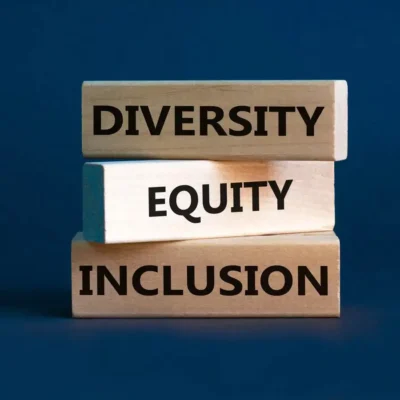Businesses around the world are facing a serious challenge—labor shortages and skills gaps in 2025 workforce planning. Despite technological advances and digital transformation, employers are struggling to find people with the right skills to fill open roles. At the same time, many workers are looking for jobs but lack the qualifications that companies now require. This mismatch is becoming a major barrier to growth, innovation, and economic stability.
Understanding the Labor Shortage Crisis
The term “labor shortage” refers to a situation where there are not enough qualified workers available to fill job openings. In 2025, this is not just about quantity, but also about quality and skill alignment.
Several factors have contributed to the labor shortage:
- Aging population: In many developed countries, a large portion of the workforce is retiring. Baby boomers are leaving, and younger generations are not replacing them at the same rate.
- Low birth rates: In regions like Europe and East Asia, fewer children are being born, leading to smaller talent pools.
- Post-pandemic shifts: The COVID-19 pandemic changed how people think about work. Many have left traditional jobs for freelance work, early retirement, or completely new career paths.
- Migration policies: Stricter immigration laws in some countries have reduced the flow of skilled labor from abroad.
According to a recent report by the World Economic Forum, over 85 million jobs could go unfilled by 2030 due to a lack of skilled talent, with 2025 being a pivotal year in this transition.
The Rising Skills Gap in 2025 Workforce Planning
While jobs are available, many of today’s applicants lack the specific skills employers need. This is known as the “skills gap.” In 2025, the gap is wider than ever before.
Key industries affected include:
- Healthcare: Nurses, technicians, and healthcare aides are in short supply due to high demand and burnout.
- Manufacturing and logistics: Automation has changed the skill sets required, but many workers haven’t received updated training.
- Technology: There’s a huge demand for AI specialists, data analysts, and cybersecurity experts—but not enough people have the necessary training.
- Construction and skilled trades: As infrastructure projects grow, qualified electricians, plumbers, and carpenters are harder to find.
Why the Skills Gap Exists
There are several reasons why the skills gap in 2025 workforce planning continues to grow:
- Fast-paced technological change: Technology is evolving faster than traditional education systems can keep up.
- Mismatch between education and industry needs: Many graduates don’t have the practical skills employers require.
- Lack of upskilling and reskilling programs: Companies are often slow to invest in training for current employees.
- Geographic imbalances: In some areas, skilled workers are available but unwilling or unable to relocate to where the jobs are.
Real-World Impact of Labor Shortages and Skills Gaps

The growing mismatch is affecting both employers and workers in major ways:
For Employers:
- Higher recruitment costs
- Delays in project delivery
- Decreased productivity
- Risk of burnout among existing staff
- Difficulty innovating and staying competitive
For Workers:
- Missed job opportunities
- Lower earning potential
- Career stagnation
- Frustration and lack of confidence
Even companies with good salaries and benefits are struggling to fill roles. This issue is no longer limited to one sector or country—it’s global.
Strategies Businesses Are Using to Adapt
To respond to these challenges in 2025 workforce planning, many organizations are rethinking how they hire, train, and retain talent.
1. Investing in Reskilling and Upskilling
Companies are now focusing on training their current employees to fill skill gaps. Short courses, certifications, and internal training programs are becoming essential.
2. Embracing Flexible Work Models
Remote and hybrid work have opened access to global talent pools. A company in New York can now hire a programmer in Kenya or a designer in Indonesia.
3. Using AI in Talent Acquisition
Artificial Intelligence helps companies quickly scan resumes, assess skills, and identify candidates who may not have traditional qualifications but have strong potential.
4. Partnering with Educational Institutions
Some firms are working directly with universities and vocational schools to design custom programs that prepare students for real-world roles.
5. Rethinking Job Requirements
A growing number of companies are eliminating degree requirements for certain roles, focusing instead on demonstrated skills and practical experience.
Role of Government and Policy in Addressing the Gaps
Governments also play a critical role in fixing the issues tied to labor shortages and skills gaps in 2025 workforce planning.
Some of the positive steps taken include:
- Tax credits for workforce training
- Grants for apprenticeship and internship programs
- Revising immigration policies to attract skilled foreign workers
- Funding for STEM education and digital literacy
- Support for displaced workers during industry transitions
Countries that have implemented national strategies for workforce development are seeing better outcomes in terms of employment and economic growth.
Emerging Trends in the Labor Market
As companies and governments respond to the labor shortage and skills gap, several trends are shaping the future of work:
- Micro-credentials and nano degrees: Short, targeted programs that validate specific skills.
- Skill-based hiring: Resumes are being replaced with skills assessments and portfolios.
- AI-powered learning: Personalized, adaptive learning experiences are helping workers reskill faster.
- Lifelong learning: The idea of one degree for life is fading. Continuous learning is now expected.
- Workforce analytics: Businesses are using data to forecast future talent needs and plan better.
What Job Seekers Can Do in 2025
If you’re a job seeker, this is the time to take charge of your career. Here are some tips to stay competitive:
- Focus on learning in-demand skills: Platforms like Coursera, Udemy, and LinkedIn Learning offer affordable courses.
- Get certified: Short certifications in areas like project management, data analytics, or digital marketing can boost your resume.
- Be open to relocation or remote roles: Flexibility can open new doors.
- Work on soft skills: Communication, teamwork, adaptability, and emotional intelligence are as important as technical skills.
- Build a personal brand: Showcase your skills on LinkedIn, GitHub, or personal websites.
The Way Forward: Bridging the Gap
Solving the challenges of labor shortages and skills gaps in 2025 workforce planning will require collaboration among governments, businesses, schools, and workers.
Here’s what needs to happen next:
- More focus on future skills: Schools and universities must teach skills that match market needs.
- Better data and forecasting: Governments and businesses should share insights to prepare for future shifts.
- Greater access to learning: Education must be affordable, accessible, and relevant.
- Support for career transitions: Workers from fading industries should get help moving into growing sectors.
- Inclusivity and diversity: Employers must create opportunities for underrepresented groups to join and thrive in the workforce.
Final Thoughts
Labor shortages and skills gaps are no longer future problems—they are today’s reality. In 2025, companies that fail to address these issues risk falling behind. At the same time, workers who invest in learning and adaptability will thrive.
By aligning education, policy, and workplace culture, we can bridge the gap and build a workforce that’s ready for the future.
Read Next – University of Michigan Federal Scrutiny After Chinese Scientists’ Arrests






